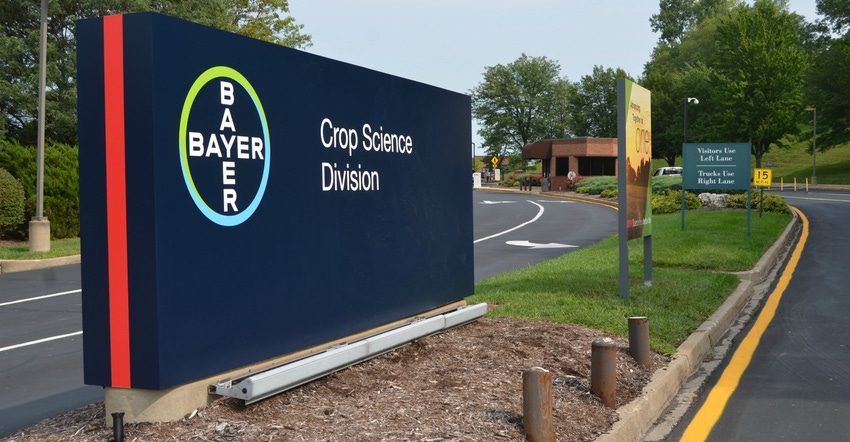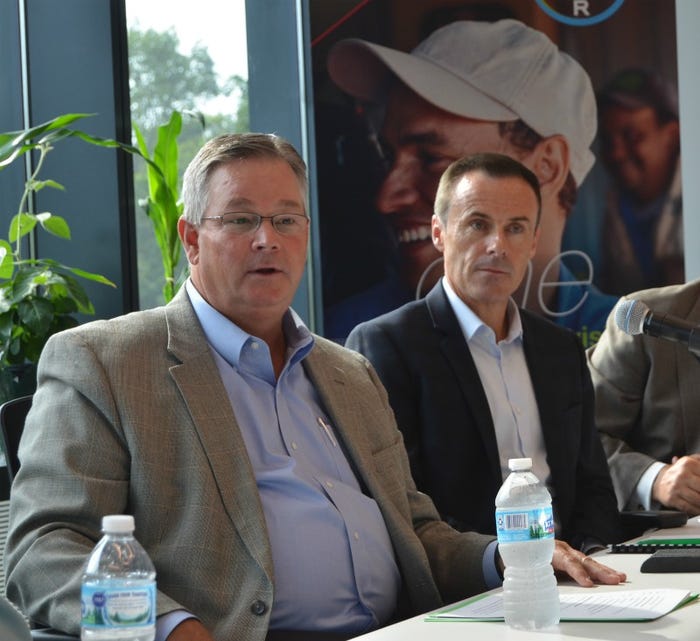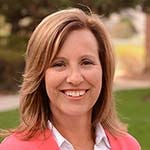
As farmers start making buying decisions for the 2019 growing season, it will be business as usual for those selecting seed or chemicals from the newly integrated Bayer Crop Science Division.
Bayer officials made it clear that farmers will be able to source their favorite brands from the Monsanto-Bayer merger. “In the near term, farmers should expect no change,” said Brett Begemann, chief operating officer at Bayer. Seed and chemical offerings will remain the same, and farmers should contact their local sales representative — whether Monsanto or Bayer — for purchases.
After the German-based Bayer officially divested certain Bayer Crop Science businesses by selling it to BASF, it completed the merger with Monsanto and started integration. Some of those divestments included field crops business and vegetable seed business.
New direction
August was the first month the two companies sat down and opened the books to one another.
Begemann was alongside Bayer AG President of Crop Sciences Division Liam Condon, at the company’s global headquarters for seeds and traits and North American headquarters in Chesterfield, Mo.
Condon shared what farmers should expect from the agricultural company. “Our first and overriding priority is to ensure a smooth, continuous business for our customers,” he said. “They should not notice any interruption whatsoever.”

NEW DIRECTION: Brett Begemann (left), chief operating officer of Bayer Crop Science Division, says the company will focus on research and development as Liam Condon, Bayer Ag president of Crop Science Division looks on.

However, the men realize these are two distinct companies and change will come. Farmers will likely see those beginning in 2020.
Condon expects that “over time and as quickly as possible,” the company will consolidate the two companies’ portfolios into one. “It will take a little bit of time,” he said, “but we want to bring it all together as one, so the customer only has one touchpoint with the company.”
What the new Bayer will look like may be up to farmers.
“We are going to ask our customers what they think,” Begemann said. “We want to know what [farmers] would like to see in this new enterprise.”
The two men plan on engaging farmers in conversations regarding what is working, what is missing, what customers like about one company and what customers don’t like about another.
“There is no better place to go than to your customer to figure out how to treat your customer,” Begemann said.
Research-driven
When it comes to research and development, Bayer officials said they are in a leading position. The company has 8,000 scientists. Bayer spends 10% of sales on research and development, Condon said. Last year, that was $2.8 billion for the newly combined company. What does that mean for farmers? “We can generate more innovation faster,” he added.
For Begemann, who farms land in Lafayette and Audrain counties in Missouri, he has given his word to fellow farmers. “I made a lot of commitment to farmers regarding the future of us coming together,” he said. “We are going to drive innovation and bring new stuff to farmers. [Farmers] are going to win out of this deal.”
Begemann pointed to how fungicides behave with different genetics. “It has been hard to look at because we didn’t have fungicide, but we had genetics.” Begemann, who was chief operating officer at Monsanto, said, “Now we can.”
He said farmers will see more research with herbicides. Scientists from both companies are excited to create new products that bring with them tolerances to get out of the trap farmers are caught in on using products and worrying about resistance to those products, according to Begemann. “We need more alternatives,” he added. With both seed and crop protection under one company, he believes early innovation can happen.
The two men pledged to work together as one company for the benefit of farmers, customers and the planet. “We bring the most advanced technological platform in ag together,” Conan said. “With the knowledge of seeds, seed traits, and digital pioneer in ag space of Monsanto and Bayer’s crop protection platform based on chemistry and biology — this is a state-of-the-art technology platform with literally the best talent in the agriculture space.”
Conan said Bayer’s purpose focuses on science for a better life. “In this case, it is shaping agriculture through innovation and helping take agriculture to the next level.”
As of Aug. 20, Conan said company employees are rolling up their sleeves and getting back out into the fields together to help customers feed the world.
About the Author(s)
You May Also Like






